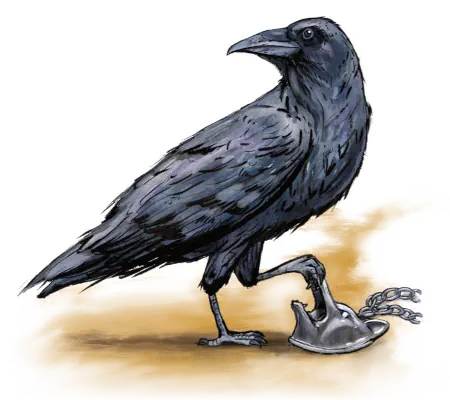| BibTeX | @article{Stangret2005,
title = {Informatycy najgorzej ubrani},
author = {Michał Stangret},
journal = {Gazeta Praca},
year = 2005,
month = nov,
day = 25,
url = {https://web.archive.org/web/20051218031319/http://praca.gazeta.pl/gazetapraca/1,67728,3032865.html}
} |
|---|
| APA | Stangret, M. (2005). Informatycy najgorzej ubrani. Gazeta Praca (25 XI 2005). web.archive.org/web/20051218031319/http://praca.gazeta.pl/gazetapraca/1,67728,3032865.html Przeglądając archiwa swoich starych dysków, natknąłem się na niesłychanie ciekawy artykuł z Gazety Praca. Czas zrobił swoje i na stronie Gazety już go niestety nie ma,1 a szkoda aby zniknął po nim ślad. Pozwolę więc sobie go zacytować w całości, aby przetrwał dla potomności: Informatycy najgorzej ubraniMichał Stangret, 25-11-2005 Są przepoceni, rzadko myją włosy i noszą flanelowe koszule wciągnięte w spodnie. Komputerowcy zajęli pierwsze miejsce w rankingu najgorzej ubranych zawodów. Dostało się też księgowym, urzędnikom i dziennikarzom.
In September 2022, ‘Théâtre D’opéra Spatial’, a work submitted by Jason Allen, won Colorado State Fair’s annual fine art competition in the digital art category. What made the success noteworthy was that the image had been AI-generated. Mr Allen eventually tried to register the work with the US Copyright Office but his attempts turned out fruitless. In September 2023 the Office refused his registration.  First, ‘Théâtre D’opéra Spatial’ by Jason M. Allen. First, ‘Théâtre D’opéra Spatial’ by Jason M. Allen.
Second, ‘A Recent Entrance to Paradise’ by Steven J. Thaler’s Creativity Machine. I didn’t think much of it at the time. I wasn’t that invested in the consideration of what kind of ‘two-dimensional artworks’ are protected by copyright and, more notably, I somewhat agreed with the decision. Perhaps the prompt was protected, but if only minor manual edits were made to the image, it felt like a stretch to say the image as a whole could be covered by copyright law. So far I have been lucky in my professional life. I have never had any conflicts with my employers and for the most part maintained good rapport with coworkers and managers alike. Alas, my luck has finally run out. Long story short, I left Composable Foundation in October and I am still waiting for my final paycheck. TL;DR: If you are doing business with them make sure you are paid in advance. Last updated in October 2025. See updates below for a full list of changes. Ever since Witcher games took off the franchise skyrocketed in popularity. Books, comics, TV show, games, more comics, another TV show… The story of Geralt and his marry company has been told in so many ways that it’s becoming a wee bit hard to keep track of chronology of all the events; especially across different forms of media. In this article I’ve collected all official Witcher works ordering them in chronological order. To avoid any confusion, let me state up front that if you’re new to the franchise or haven’t read the books yet this list might not be for you. If you’re looking for the order to read the books in, I’ve prepared a separate article which describes that. Skip right to the chronology Updated in October 2025 to include discussion of Crossroads of Ravens. Without beating around the bush, the reading order for the Witcher books is as follows: © Matt Sporek © Matt Sporek | 1. | The Last Wish | Short
stories |
|---|
| 2. | Sword of Destiny | | 3. | Blood of Elves | The Witcher Saga |
|---|
| 4. | Time of Contempt | | 5. | Baptism of Fire | | 6. | The Tower of the Swallow | | 7. | The Lady of the Lake | | 8. | Season of Storms | | 9. | Crossroads of Ravens |
Documenting source code is important part of software engineering. Code is read more often than it’s written making it crucial to provide enough context for reader to understand what the implementation is doing. This can come in the form of links to external resources providing description of an algorithm, reference for an API or historic context justifying the code. As it turns out, C and C++ languages offer a little-known feature which allows URLs to be included directly in the function source code. For example: static float rsqrt(float x) {
https://en.wikipedia.org/wiki/Fast_inverse_square_root
static_assert(std::numeric_limits<float>::is_iec559);
auto i = std::bit_cast<uint32_t>(x) >> 1;
auto y = std::bit_cast<float>(UINT32_C(0x5F375A86) - i);
y *= 1.5f - x * 0.5F * y * y;
return y;
}In a past life I’ve talked about a challenge to write the shortest program which prints all prime numbers less than a hundred. Back then I’ve discussed a 60-character long solution written in C. Since Rust is the future, inspired by a recent thread on Sieve of Eratosthenes I’ve decided to carry the task for Rust as well. To avoid spoiling the solution, I’m padding this article with a bit of unrelated content. To jump straight to the code, skip the next block of paragraphs. Otherwise, here’s a joke for ya: Every now and again I need a specific name for operands or results of various arithmetic operations. It usually takes me embarrassingly long time to look that information up. To save time in the future, here’s the list: $$ \begin{align} \left. \begin{matrix} \text{augend} + \text{addend}^† \\ \text{summand} + \text{summand} \\ \text{term} + \text{term} \end{matrix} \right\} & = \left\{ \begin{matrix} \text{sum} \\ \text{total} \end{matrix} \right. \\[.5em] \text{minuend} - \text{subtrahend} & = \text{difference} \\[.5em] \left. \begin{matrix} \text{multiplier} × \text{multiplicand} \\ \text{factor} × \text{factor} \\ \end{matrix} \right\} & = \text{product} \\[.5em] \left. \begin{matrix} \text{dividend} ÷ \text{divisor} \\ {\text{numerator}\over\text{denominator}} \end{matrix} \right\} & = \left\{ \begin{matrix} \text{ratio} \\ \text{fraction} \\ \text{quotient}^‡ + \text{remainder} \end{matrix} \right. \\[.5em] \text{base}^{\text{exponent}} & = \text{power} \\[.5em] \sqrt[\text{degree}]{\text{radicand}} & = \left\{ \begin{matrix} \text{root} \\ \text{radical} \end{matrix} \right. \\[.5em] \log_\text{base}(\text{anti-logarithm}) & = \text{logarithm} \end{align} $$ † Occasionally used to mean any operand of addition.
‡ Occasionally used to mean the fraction itself rather than only the integer part. List in big part thanks to Wikipedia. |
|---|